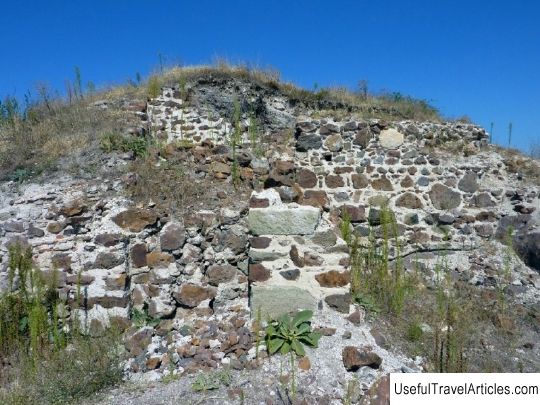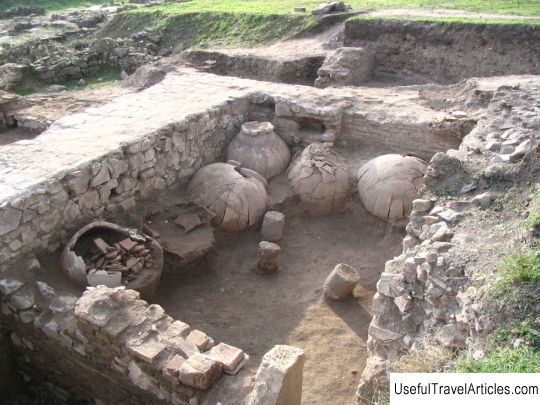Rusokastro description and photos - Bulgaria: Burgas

Rusokastro description and photos - Bulgaria: Burgas. Detailed information about the attraction. Description, photos and a map showing the nearest significant objects. Photo and descriptionIn Bulgaria, in the Burgas region, near the village of Zhelyazovo, there are the ruins of the Rusokastro fortress. This fortress received a resounding historical glory due to the fact that it was here that the Bulgarian troops won their last victory before the onset of the era of five centuries of Ottoman rule. Archaeological excavations continue here to this day, but only fragments of buildings and walls remained from the fortress. The Rusokastro fortress was located on a mountain plateau, the area of which was approximately one and a half to two hectares. Below there was a road of national importance, which was under the control of the fortress. Water came through a tunnel from a nearby river, this kind of aqueduct was found by archaeologists. In the travel notes of Idrisi, an 11th century Arab traveler, you can find the first mention of this fortress. Idrisi wrote that Rusokastro is a city inhabited by a large number of people. Artifacts found by archaeologists - tools and ceramics, indicate that settlements in this place were formed even before our era in the second century. At the beginning of the 14th century, the fortress repeatedly passed from hand to hand from Bulgarians to Byzantines and back , and in 1331 an important historical battle took place in the vicinity of the fortress between the allied troops of the Serbs and Bulgarians and the Byzantine army. The invasion of Byzantium into Bulgarian territory was stopped and a peace treaty was signed. After the Turks captured Bulgaria, the Rusokastro fortress did not lose its significance and was constantly used. Now in this territory you can see the ruins of the walls and the main gate, which have survived in the southern and southwestern part of the mountain plateau. At the time when the fortress was functioning, the thickness of its walls was about two - two and a half meters. From the north and east, Rusokastro was protected by thirty-meter vertical cliffs. Also in the northern part of the plateau there is a cave in which there is a source that is considered holy. On the territory of Rusokastro, the remains of two churches were discovered, in one of them dating back to the sixth century, archaeologists found an ampoule with holy water, presumably brought here from the Holy Mountain. In the summer of 2012, a historical reconstruction was carried out near the walls of the Rusokastro fortress battle between the Bulgarian and Byzantine armies. From the north and east, Rusokastro was protected by thirty-meter vertical cliffs. Also in the northern part of the plateau there is a cave in which there is a source that is considered holy. On the territory of Rusokastro, the remains of two churches were discovered, in one of them dating back to the sixth century, archaeologists found an ampoule with holy water, presumably brought here from the Holy Mountain.In the summer of 2012, a historical reconstruction was carried out near the walls of the Rusokastro fortress battle between the Bulgarian and Byzantine armies. From the north and east, Rusokastro was protected by thirty-meter vertical cliffs. Also in the northern part of the plateau there is a cave in which there is a source that is considered holy. On the territory of Rusokastro, the remains of two churches were discovered, in one of them dating back to the sixth century, archaeologists found an ampoule with holy water, presumably brought here from the Holy Mountain.In the summer of 2012, a historical reconstruction was carried out near the walls of the Rusokastro fortress battle between the Bulgarian and Byzantine armies.     We also recommend reading Mausoleo di Galla Placidia description and photos - Italy: Ravenna Topic: Rusokastro description and photos - Bulgaria: Burgas. |




